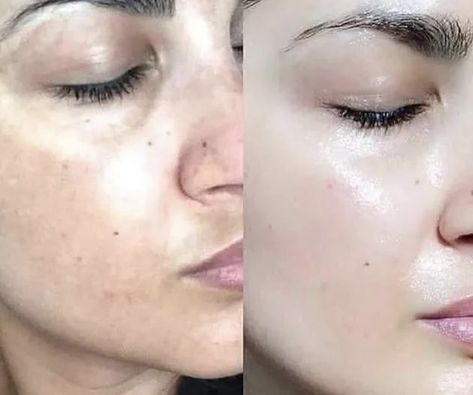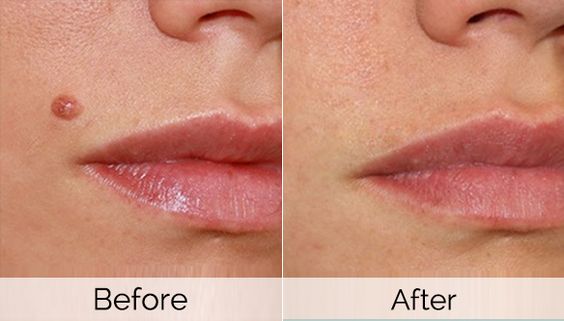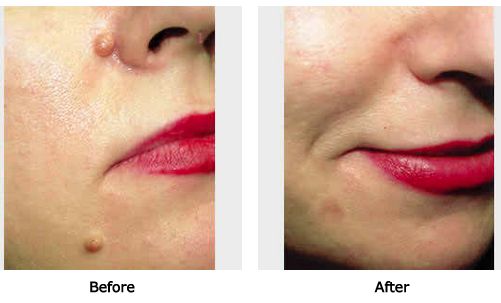Moles are those pigmented spots on your skin, usually brown or black. While most are harmless, some raise concerns about appearance or potential health risks. If you’re considering mole removal, here’s a guide to explore different removal methods and factors to consider.
There are two main reasons for mole removal:
You simply don’t like the way a mole looks on your skin. It might be large, raised, or in a location you find bothersome.
If a mole shows signs of change in size, shape, color, or bleeds easily, it’s crucial to see a dermatologist for evaluation. Early detection is key for any potential skin cancer concerns.
Several methods can be used to remove moles, and the best option depends on the mole’s size, location, and potential for biopsy. Here’s a breakdown of some common methods:
A simple procedure using a scalpel to shave off the raised portion of the mole. Ideal for small, benign moles.
A more involved procedure where the mole and a small margin of surrounding skin are removed with a scalpel. This method is often used for larger moles or those requiring biopsy for cancer screening.
A small circular instrument removes a core of tissue from the mole for laboratory analysis. This is typically done for moles with concerning changes.
A laser beam vaporizes the mole tissue. This method offers precise removal and minimal scarring, but might not be suitable for all moles.
Liquid nitrogen freezes and destroys the mole tissue. This technique is often used for precancerous lesions.
Consulting a dermatologist is essential before mole removal. They can:
They will assess the mole’s characteristics and determine if removal is necessary based on appearance or potential health concerns.
The dermatologist will choose the most suitable technique based on your mole’s features and your needs.
They will perform the removal safely and efficiently in a clinical setting.
In some cases, the removed mole tissue will be sent to a lab for analysis to rule out any cancerous changes.
The recovery process depends on the removal method used. Shave excision and laser ablation typically have shorter healing times with minimal scarring. Surgical excision or biopsy might require stitches and a longer healing period. Your dermatologist will provide specific aftercare instructions, which might involve keeping the area clean and protected from sun exposure.
Moles are pigmented growths on the skin that form due to clusters of melanin-producing cells. They can be brown, black, tan, or pink, and vary in size, shape, and texture. While most moles are harmless, some may require monitoring or removal.
There are two main reasons for mole removal:
Recovery time depends on the size and location of the mole, as well as the removal method used. Generally, you can expect some minor swelling, redness, and crusting at the removal site. It's important to follow your doctor's instructions for wound care to minimize scarring.
Mole removal methods include surgical excision, shave excision, laser removal, and cryotherapy (freezing). The choice of method depends on factors such as the size, location, and type of mole.



